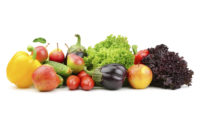Food and beverage consumption patterns are among the most stable consumer behaviors, but changes are happening that will alter, and even disrupt, what is considered to be the fundamentals for this industry. These trends are gathering steam.
The NPD Group, Inc., Port Washington, N.Y., released its predictions for 2017 and beyond:
Sweating the small stuff
It's the little things grabbing consumers’ attention these days; they can be small but influential ways to garner loyalty among consumers. Consumers are increasingly looking to support brands and companies that do more than manufacture a product —they want to support causes and actions aligned with their values. People feel they’re doing right when they support companies that are connected to locally sourced ingredients, donations to charities, sustainable environmental practices and animal welfare practices. The constant flow of internet-based information will continue growing, so expect younger consumers to research brands and pinpoint those with the qualities they value.
Healthful eating gets personal
It’s not about what works on average, but what works for the individual. Just as consumers want personal touches in the foods they eat, health is getting personal as well. Wearable devices that track footsteps and apps that track calories allow consumers to develop their own personal plans to meet their needs, rather than relying on health plans based on averages. Even though dieting is on the decline, “my own diet” is still rising as the most common way consumers take control of their intake. They’re looking for personal plans that meet their own specific interests, and more importantly, their lifestyles.
The future is now
Technology is quickly making its way into how we acquire our foods and beverages. It represents a small portion of food acquisition, but has the potential to grow if consumers are convinced the extra cost of technology saves time in other areas of their lives. Technology is also helping consumers avoid the grocery store entirely by enabling them to purchase their groceries online and have them delivered to their homes. Based on growth patterns for this behavior, NPD Group expects to see more people in the coming years use retailers’ websites or third-party sites to acquire foods and beverages.
Meal kits are another time-saver and solve the age-old problem of figuring out what to have for dinner. The kits also prevent fresh foods from spoiling by providing the exact amount of ingredients called for by a particular recipe.
Home is where the meal is
It’s becoming more common to make meals at home while also using dishes sourced from restaurants. Those purchased components are more likely to be appetizers or side dishes, indicating consumers use these dishes as quick ways to round out or complete their meals. It’s yet another sign people want freshly prepared items in the home without having to spend a great deal of time in the kitchen. This is a true generational shift; younger consumers already consume fresh foods at rates higher than older adults did when they were the same age. As these younger consumers age, NPD Group’s forecast shows their demand for freshness in a hurry will only increase.

